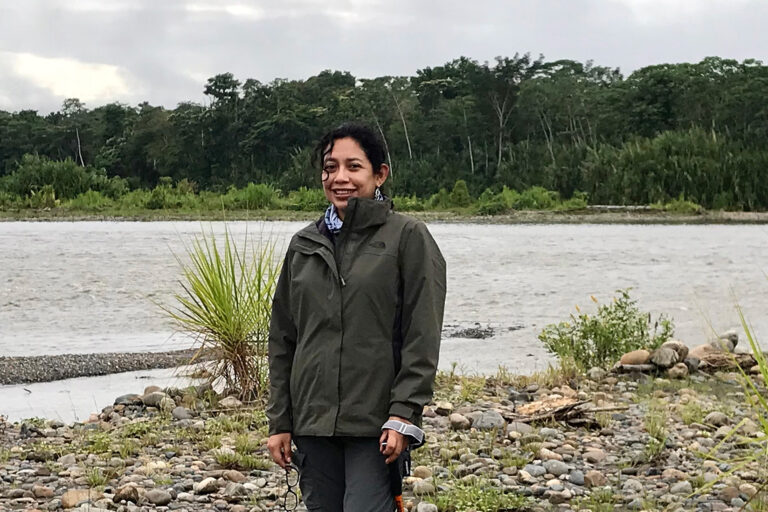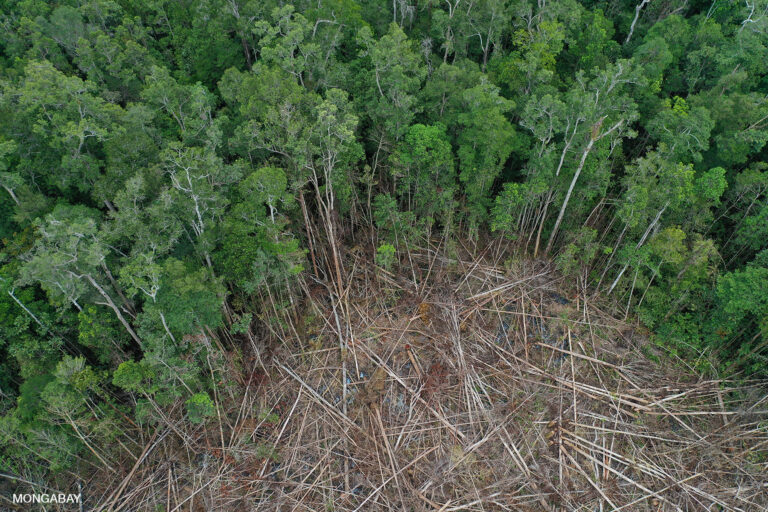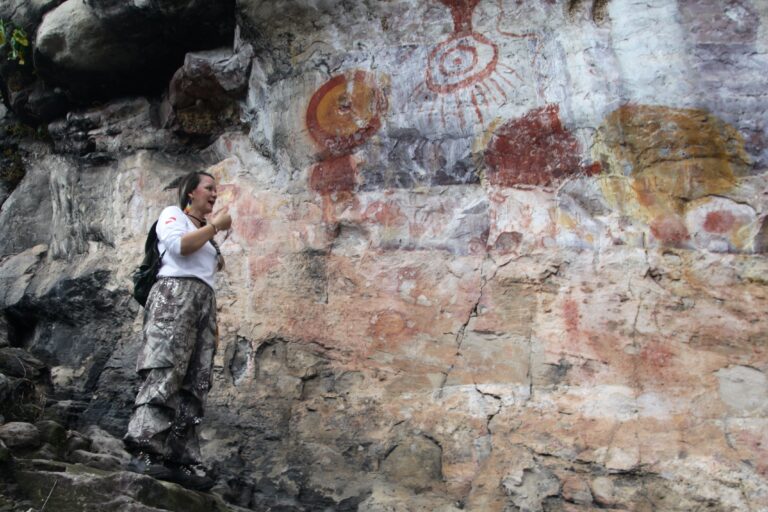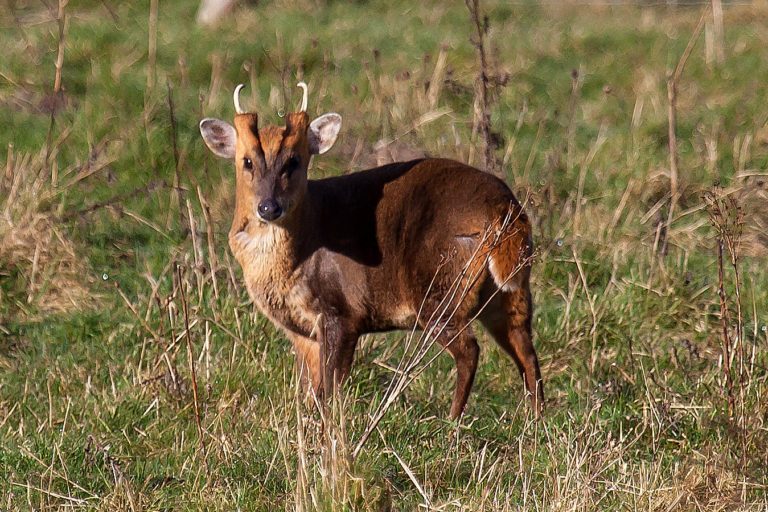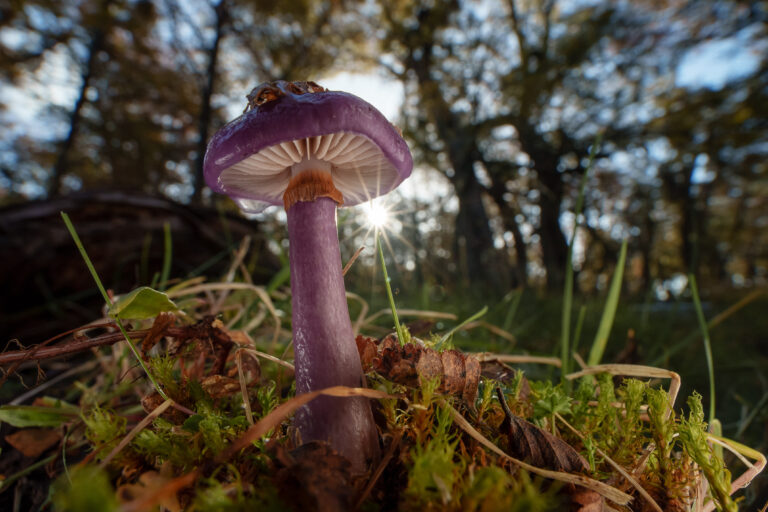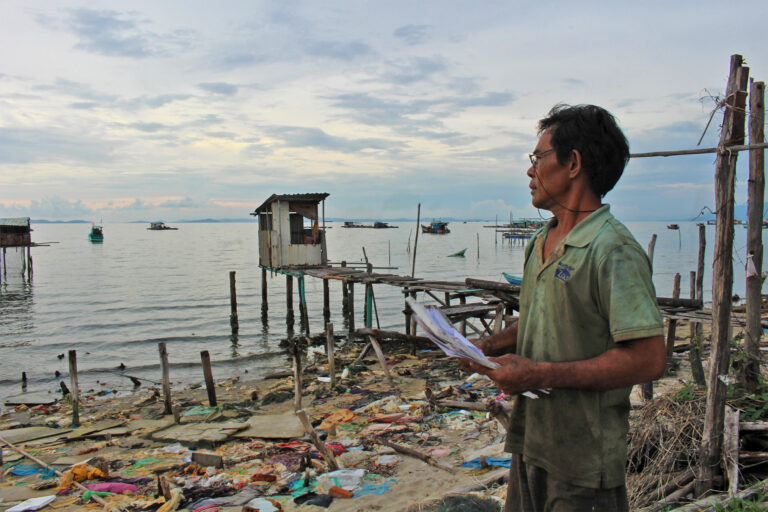- According to authorities and residents, cattle from Central America are brought to Mexico illegally over the porous border with Guatemala and left to graze in the Lacandon Jungle, a protected area.
- The Lacandon Jungle in Chiapas state once covered 1.5 million hectares. Today, it is only a third of that size and continuing to shrink.
- A potent mix of poverty, porous borders and lack of government control of protected areas has contributed to the proliferation of small cattle ranches throughout the area, which, combined, have a major impact on the ecosystem.
The last thing on the minds of those who conduct their business on Mexico’s border with Guatemala is that cattle may be driving the destruction of the Lacandon Jungle, which straddles the two countries. Bringing in cattle, undocumented, suited Mexican farmer Carlos Rodríguez. He would buy the animals for a low price, transport them across the border in his truck, then leave them to fatten up on his property before selling them for a profit.
But it was a business that necessitated cash transactions: Rodríguez saw weapons, cars peppered with bullet holes, and was once nearly assaulted. So he gave it up.
For Rodríguez, it was a good job and remains popular on Mexico’s southern border. Yet the growing population in places like Marqués de Comillas municipality in Chiapas state, where Rodríguez lives, is putting increasing pressure on the Lacandon Jungle, brought about by land-use change for farming and ranching.
The Lacandon Jungle lost 1,420 square kilometers (548 square miles) of forest between 2000 and 2012, or 6 percent of the total forest area lost in Mexico during that period, according to a study by the NGO Natura Mexicana. That translates into some 500 million trees and at least 32 million tons of biomass.
Rodríguez’s home is just meters from the Lacantún River on the outskirts of the Montes Azules Biosphere Reserve, a protected area of the Lacandon Jungle. Every year, the human presence here grows, as in the seven other conservation areas in the jungle, driven in part by extensive livestock ranching.
Natura Mexicana, which has a research station in Montes Azules, says deforestation in protected areas typically starts at the edges and works its way inward. This is the case in the Lacandon Jungle, where more than 200,000 people now live and which the NGO describes as effectively “a rural area with numerous settlements and small, dispersed towns.”
“There are clearly centers of growth where cities of considerable size already exist, while the protected natural areas and their surroundings have only small, dispersed towns,” the Natura Mexicana study says.

The scale of ranching here is an “enemy to be defeated,” says the National Commission of Natural Protected Areas (CONANP). “It is the main factor in the change in land use” in Mexico, says Adrián Méndez, regional CONANP director for the south of the country, who blames the unregulated entry of cattle for the expanding size of local herds.
Officials at the Mexican Ministry of Agriculture, Livestock, Rural Development, Fisheries and Food (SAGARPA) acknowledge there’s a disparity between the number of cattle bred in the state of Chiapas and the true number in the state. It’s impossible that they’re all locally bred, says Carlos Toledo, SAGARPA’s head of livestock development in Chiapas.
While some of the livestock brought in from Guatemala and elsewhere in Central America are taken further north into Mexico, most don’t venture far from the border region, where they are grazed so they can gain weight before being sold again.
There are 2.3 million head of livestock in Chiapas, according to reported SAGARPA estimates, with a million pouring into Mexico through unauthorized entry points every year. While CONANP is aware of the impacts that the livestock are having on natural protected areas, or ANPs, Méndez says his office has “not investigated the origin of the animals.”
Residents of Marqués de Comillas say the cattle from Guatemala are taken through gaps in the border, either on foot or in trucks, and across the Usumacinta River — sometimes swum over, other times on specially built barges — and into Mexico. Residents say it is these animals that have the local ranches “full to bursting.”

Guillermo Jiménez, a livestock specialist at the Colegio de la Frontera Sur research center, or ECOSUR, says the influx of illegal cattle can’t be controlled, even though the authorities are aware of the problem, corroborating the locals’ views on the matter.
The office of the Chiapas state attorney general told Mongabay Latam that it had no information about the issue. The Ministry of Finance and Public Credit, which monitors cross-border commerce, replied through the National Institute for Access to Information that this matter was not its responsibility.
The Office of the Attorney General (PGR) said it had no information about any investigations into cattle trafficking, but said the Ministry of Environment and Natural Resources (SEMARNAT) would know. SEMARNAT, however, also denied knowledge of the issue.
A fifth government office, the Chiapas Ministry of the Countryside, did not respond to questions from Mongabay Latam by the time reporting for this article was complete.

Cash and cattle
There are answers to be had, though, just over the border in Guatemala. Across from Marqués de Comillas sits a “livestock shop” called El Sabanar, where animals are bought and sold for cash, with no documentation to leave a paper trail. Many of the deals involve large sums of money, which feeds a tense atmosphere and mistrust between buyers and sellers. “Everybody takes weapons with them, we don’t get involved there anymore,” says Rodríguez, the former trader.
The last time he went to El Sabanar to buy livestock, he saw signs of a recent gunfight and narrowly escaped an attempted assault. “They wanted to steal my money, so I stopped going there,” he says. He adds that he now stocks his ranch with only “documented” animals, bred in Mexico.
The trafficked animals, typically malnourished, hungry and suffering from physical mistreatment, arrive on board trucks unsuited for transporting livestock, according to residents of Marqués de Comillas. They’re a common sight along the roads near the border, from where they are smuggled into the jungle areas of Marqués de Comillas to recover.
In a 2016 report, the Mexican Army said it had carried out a four-month investigation that showed livestock were crossing the porous border without any health inspections being done. The report also shed light on drug trafficking that makes use of the infrastructure already in place to facilitate the cattle smuggling.

The Army’s findings came as no surprise to the locals, and corroborated testimony gathered by Mongabay Latam from residents of the region. Rodríguez says he used to bring cattle into the country through a military checkpoint. “They only ever asked to see a stamp from the Guatemalan authorities to say that the animals had not been stolen,” he says.
Toledo, the head of the state’s livestock development program, acknowledges the porousness of the border, and says SAGARPA has records of unauthorized livestock entering the states of Quintana Roo, Campeche, Tabasco and Chiapas — that is, all along the southern border.
“The exchange of goods that takes place at the southern border is often illegal or unofficial. The geographic conditions are ideal for livestock trafficking, which has long taken place in southeastern Mexico,” Toledo says. There are, he adds, “no obstacles” to the entry of contraband.

A journey along the porous border
Not much news reaches this far-flung region on the edge of Mexico. It was only in the 1970s that towns sprang up when the national government offered properties on the jungle floodplain to people living more centrally in the country. These new arrivals came from a “very different culture and had different traditions” from those of the local Mayan populace, “and were also used to environmental conditions unlike those of the region,” according to Natura Mexicana.
A road built by the Mexican Army in the wake of the Zapatista National Liberation Army (EZLN) uprising follows the straight line that marks part of the border in the jungle area of eastern Chiapas. In Marqués de Comillas and along most of the rest of the road leading to other eastern towns, the only cellphone signal comes from Guatemalan carriers. The range of products in the local shops and the regional accent complete the impression of a foreign place.
Further along the road but still in Marqués de Comillas, the Nuevo Orizaba public land comes into view. It is both the site of an official border crossing and unofficial point of livestock entry into the country, a fact confirmed by Mario Valencia, the Nuevo Orizaba president.
The local economy hinges on African oil palms and cattle ranching. It’s the same in places further up the road, which leads north to the main municipality, Benemérito de Las Américas, located on the banks of the Usumacinta River, the natural border between Mexico and Guatemala.
Twenty kilometers (12 miles) out from the main village of the municipality, cattle ranches line both sides of the road, and those in charge of moving the livestock can be seen at work. The main crossing points for the animals along the Usumacinta are close by. Several sources told Mongabay Latam that the livestock trafficked from Central America are taken to these ranches, but also sometimes taken by trailer further into the country.

“Who knows where they fatten up the livestock,” says Fabrizio Landeros, president of the Boca de Chajul public land and a rancher. He says the region’s ranches are “saturated.” People “have to put them on other ranches in the area so that they [improve their] condition.”
A constant sight here are the panzonas —“big bellies,” as the tractor-trailers that transport the cattle are called. “If six trailers of cattle arrive, they already have 20 to replace them,” says local cattle rancher Jesus Aguilar Valencia.
“Up to 30 trailers leave daily,” says Landeros. “All that cattle comes out of Central America. Each trailer carries between 80 and 85 animals.”

It is here, in the municipality of Benemérito de las Américas, that the Army found drugs being smuggled in, hidden in the stomachs of the cattle. The report identifies the area as the scene of conflicts between cattle organizations thought to be involved in moving both livestock and narcotics. The main cattle association in Chiapas declined to comment.
In May 2016, senior military officers from Guatemala and Mexico met to “exchange information on the various illicit acts being committed” along the length of their shared border, as reported by the Guatemalan military magazine Dialogo. During the meeting, the officers reportedly analyzed “joint operations and operation results in the fight against narcotrafficking, contraband, human trafficking, and cattle trafficking at unofficial crossing points on the Mexican border.”

“One can tell there’s money in Benemérito. It’s from moving cattle,” Landeros says. “As long as the government allows it, people will do what they want, and where there’s money, it’s hard for the government and health authorities to object. They don’t give a damn. Here, there’s no problem.”
A local cattle rancher who used to buy cows from Costa Rica and Colombia, and asked that he not be named out of fear for his safety, told Mongabay Latam that the business was supported by a network of coyotes (traffickers) that spans from Colombia to Mexico and all the countries in between. He also said drugs were carried inside the panzonas.

Living piggy banks
The deforestation of the Lacandon Jungle due to the illegal and constant entry of cattle is an example of the “campesinization” of cattle ranching — the proliferation of small family-owned ranches that spread, like an ant colony, across the region and speed up the deforestation of the jungle.
Jiménez, from the ECOSUR research institute, says the growth of these small ranches in the jungles of southern Mexico is uncontrolled. The cattle are seen as “living piggy banks” that help families survive tough times. “We have cattle only so we don’t starve,” says Carlos Rodríguez, the Marqués de Comillas rancher.

More than three-quarters of residents in Chiapas, or about 4.1 million people, live in poverty — the highest proportion of any state in Mexico — according to the National Council for the Evaluation of Social Development Policy (CONEVAL). Of these, nearly 1.5 million live in extreme poverty.
The panzonas that bring the cattle here deliver them to either the large ranches or to the smaller ones in the jungle. While the former occupy stretches of flat plain, ideal for cattle ranching, the latter are located in the rugged and uneven terrain of the Lacandon Jungle.
Méndez, the protected areas director, says a key characteristic of protected natural areas is that they are difficult to access, but that campesino families still use them for ranching.
“The protected areas contain terrain with steeper slopes. In fact, the flat cattle ranching areas belong to small landowners who kept the best lands. And where did the campesinos go? To the hills, to the more rugged areas,” he says.
CONANP describes these areas as typically “rough, highly ecologically vulnerable terrain.” This small-scale ranching, it says, “is frequently carried out in agricultural border areas close to or within protected natural areas.”
Valencia, the rancher, has over the years come to possess 33 hectares (82 acres) of land. He says that if he were to take part in the government’s Payment for Ecosystem Services (PES) program, he would receive 33,000 pesos ($1,775) a year for conserving the land. Half of that sum would have to be invested back into the fund set up by the government to issue the payments. “And if you fail to comply, they cancel it all. It doesn’t matter that you have jungle,” Valencia says.
Instead, he makes use of the land, ranching cattle and selling some 110 head per year at 4,000 pesos ($215) each — “Much more that what I would earn with the PES.”

The potent mix of poverty, porous borders, and lack of state control over protected areas means that the campesinization of cattle ranching is fast eroding away at protected natural areas. Globally, some 80 million people living in poverty “live or attempt to live” off this activity, according to Ecosur’s Jimenez.
“I don’t condemn the act,” says Lorenzo de Rosenzweig, director of the Mexican Fund for the Conservation of Nature. “It’s the result of a lack of opportunity, and if one adds up the individual cases, it can have a significant impact.”
The National Autonomous University of Mexico (UNAM) has warned that the deforestation rate in the Lacandon Jungle over the past four decades is untenable.
“The Lacandon Jungle in Chiapas once covered 1.5 million hectares,” or about 5,800 square miles, UNAM wrote in a 2013 publication. “Today, 500,000 hectares remain and must urgently be conserved for their tremendous value. They possess the greatest biodiversity in Mexico, including fauna and flora unique to the area. In addition, these hectares are a very important climatic regulator and are of exceptional value as a water resource due to the immense rivers that run through them.”

Like the other offices consulted, the Mexican Fund for the Conservation of Nature does not have exact information on how much the illegal entry of cattle contributes to deforestation in Mexico’s Lacandon Jungle. De Rosenzweig believes it is very difficult to carry out such measurements in the jungle.
“It is much harder to know this when it comes to cattle ranching in the tropics. The practice is much more dispersed and it is not as easy to survey changes in land use,” he says.
Mendéz says it’s clear to CONANP that it cannot stop cattle ranching in protected natural areas. That’s why it’s focused instead on trying to bring order to the activity and transforming practices used extensively in pastoral ranching, as it has already done in other parts of the country.
“Today we understand that we cannot separate this agricultural practice from the countryside, and so we must seek better practices,” he says.
This story appeared originally in Spanish at Mongabay Latam on February 19, 2018, here.







